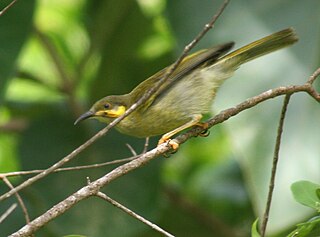 W
WThe wattled honeyeaters make up a genus (Foulehaio) of birds in the family Meliphagidae.
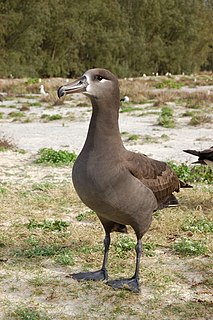 W
WThe black-footed albatross is a large seabird of the albatross family Diomedeidae from the North Pacific. All but 2.5% of the population is found among the Northwestern Hawaiian Islands. It is one of three species of albatross that range in the northern hemisphere, nesting on isolated tropical islands. Unlike many albatrosses, it is dark plumaged.
 W
WThe Laysan albatross is a large seabird that ranges across the North Pacific. The Northwestern Hawaiian Islands are home to 99.7% of the population. This small gull-like albatross is the second-most common seabird in the Hawaiian Islands, with an estimated population of 2.5 million birds, and is currently expanding its range to new islands. The Laysan albatross was first described as Diomedea immutabilis by Lionel Walter Rothschild, in 1893, on the basis of a specimen from Laysan Island.
 W
WThe short-tailed albatross or Steller's albatross is a large rare seabird from the North Pacific. Although related to the other North Pacific albatrosses, it also exhibits behavioural and morphological links to the albatrosses of the Southern Ocean. It was described by the German naturalist Peter Simon Pallas from skins collected by Georg Wilhelm Steller. Once common, it was brought to the edge of extinction by the trade in feathers, but with protection has recently made a recovery.
 W
WThe brown booby is a large seabird of the booby family, Sulidae, of which it is perhaps the most common and widespread species. It has a pantropical range, which overlaps with that of other booby species. The gregarious brown booby commutes and forages at low height over inshore waters. Flocks plunge-dive to take small fish, especially when these are driven near the surface by their predators. They only nest on the ground, and roost on solid objects rather than the water surface.
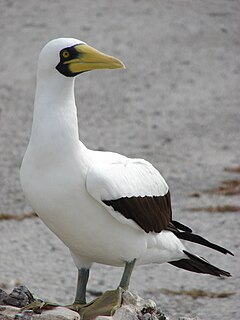 W
WThe masked booby, also called the masked gannet or the blue-faced booby, is a large seabird of the booby and gannet family, Sulidae. First described by the French naturalist René-Primevère Lesson in 1831, the masked booby is one of six species of booby in the genus Sula. It has a typical sulid body shape, with a long pointed yellowish bill, long neck, aerodynamic body, long slender wings and pointed tail. The adult is bright white with black wings, a black tail and a dark face mask; at 75–85 cm (30–33 in) long, it is the largest species of booby. The sexes have similar plumage. This species ranges across tropical oceans, except in the eastern Atlantic and eastern Pacific. In the latter, it is replaced by the Nazca booby, which was formerly regarded as a subspecies of masked booby.
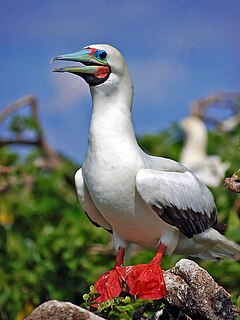 W
WThe red-footed booby is a large seabird of the booby family, Sulidae. Adults always have red feet, but the colour of the plumage varies. They are powerful and agile fliers, but they are clumsy in takeoffs and landings. They are found widely in the tropics, and breed colonially in coastal regions, especially islands. The species faces few natural or man-made threats, although its population is declining it is considered to be a least-concern species by the International Union for Conservation of Nature (IUCN).
 W
WThe spotless crake is a species of bird in the rail family, Rallidae.
 W
WThe Pacific long-tailed cuckoo, also known as the long-tailed cuckoo, long-tailed koel, sparrow hawk, home owl, screecher, screamer or koekoeā in Māori, is a species of the Cuculidae bird family. It is a migratory bird that spends spring and summer in New Zealand, its only breeding place, and spends winter in the Pacific islands. It is a brood parasite, laying its eggs in the nests of other bird species and leaving them to raise its chicks.
 W
WThe crimson-crowned fruit dove is a species of bird in the family Columbidae. It is found in American Samoa, Fiji, Marshall Islands, Niue, Samoa, Tonga, and Wallis and Futuna Islands. Its natural habitats are subtropical or tropical moist lowland forest and subtropical or tropical mangrove forest.
 W
WThe many-colored fruit dove is a species of bird in the family Columbidae. It occurs on islands in the south-west Pacific Ocean where it is found in Fiji, the Samoan Islands, and Tonga. Its natural habitat is subtropical or tropical moist lowland forests. It usually feeds high in the canopy on fruit and berries, especially figs. The nest is a small platform of twigs where one white egg is laid.
 W
WThe Tongan ground dove, also known as the shy ground dove or friendly ground dove, is a species of bird in the family Columbidae. It is found in American Samoa, Fiji, Samoa, Tonga and Wallis and Futuna Islands. Its natural habitat is subtropical or tropical moist lowland forests. It is threatened by habitat loss.
 W
WThe great frigatebird is a large seabird in the frigatebird family. There are major nesting populations in the tropical Pacific and Indian Oceans, as well as a tiny population in the South Atlantic.
 W
WThe lesser frigatebird is a seabird of the frigatebird family Fregatidae. At around 75 cm (30 in) in length, it is the smallest species of frigatebird. It occurs over tropical and subtropical waters across the Indian and Pacific Oceans as well as off the Atlantic coast of Brazil.
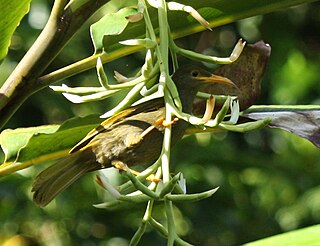 W
WGymnomyza is a genus of birds, in the honeyeater family Meliphagidae, which are restricted to a few islands in the southwest Pacific Ocean.
 W
WThe Pacific reef heron, also known as the eastern reef heron or eastern reef egret, is a species of heron found throughout southern Asia and Oceania.
 W
WThe Pacific kingfisher is a medium-sized kingfisher belonging to the subfamily Halcyoninae, the tree kingfishers. It has a wide range throughout the South Pacific islands. It was previously considered a subspecies of the collared kingfisher.
 W
WThe black noddy or white-capped noddy is a seabird from the family Laridae. It is a medium-sized species of tern with black plumage and a white cap. It closely resembles the lesser noddy with which it was at one time considered conspecific. The black noddy has slightly darker plumage and dark rather than pale lores.
 W
WThe blue noddy is a seabird in the family Laridae. It is also known as the blue-grey noddy.
 W
WThe brown noddy or common noddy is a seabird in the family Laridae. The largest of the noddies, it can be told from the closely related black noddy by its larger size and plumage, which is dark brown rather than black. The brown noddy is a tropical seabird with a worldwide distribution, ranging from Hawaii to the Tuamotu Archipelago and Australia in the Pacific Ocean, from the Red Sea to the Seychelles and Australia in the Indian Ocean and in the Caribbean to Tristan da Cunha in the Atlantic Ocean. The brown noddy is colonial, usually nesting on elevated situations on cliffs or in short trees or shrubs. It only occasionally nests on the ground. A single egg is laid by the female of a pair each breeding season. In India the brown noddy is protected in the PM Sayeed Marine Birds Conservation Reserve.
 W
WThe grey noddy or grey ternlet is a seabird belonging to the family Laridae. It was once regarded as a pale morph of the blue noddy but is now usually considered to be a separate species.
 W
WThe Pacific black duck, commonly known as the PBD, is a dabbling duck found in much of Indonesia, New Guinea, Australia, New Zealand, and many islands in the southwestern Pacific, reaching to the Caroline Islands in the north and French Polynesia in the east. It is usually called the grey duck in New Zealand, where it is also known by its Maori name, pārera.
 W
WThe oceanic eclectus parrot is an extinct parrot species which occurred on Tonga, Vanuatu and possibly on Fiji. Its only living relative is the eclectus parrot, which has proportionally larger wings than the oceanic eclectus parrot. The fossil material unearthed in November 1989 in Late Pleistocene and Holocene deposits on 'Eua, Lifuka, 'Uiha and Vanuatu and described in 2006 by David William Steadman include a complete femur, five radii, a quadrate bone, a mandible, a coracoid, two sterna, two humeri, two ulnae, two tibiotarsi, a carpometacarpus, a tarsometatarsus, and three pedal phalanges.
 W
WThe black-winged petrel is a species of seabird in the family Procellariidae. It breeds on a number of oceanic islands in the tropical and subtropical East Pacific Ocean and spends the rest of the year at sea.
 W
WGould's petrel is a species of seabird in the family Procellariidae. The common name commemorates the English ornithologist and bird artist John Gould (1804-1881).
 W
WThe Herald petrel is a species of seabird and a member of the gadfly petrels. The bird is 35–39 cm (14–15 in) in size, with an 88–102 cm (35–40 in) wingspan.
 W
WPycroft's petrel is a species of seabird in the petrel and shearwater family Procellariidae.
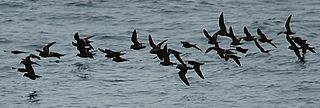 W
WThe black storm petrel is a small seabird of the storm petrel family Hydrobatidae. It is 23 cm in length, with a wingspan of 46–51 cm.
 W
WLeach's storm petrel or Leach's petrel is a small seabird of the tubenose order. It is named after the British zoologist William Elford Leach. The scientific name is derived from Ancient Greek. Oceanodroma is from okeanos, "ocean" and dromos, "runner", and leucorhoa is from leukos, "white" and orrhos, "rump".
 W
WMarkham's storm petrel is a species of storm petrel in the family Hydrobatidae. An all black to sooty brown seabird, Markham's storm petrel is difficult to differentiate from the black petrel Procellaria parkinsoni in life, and was once described as conspecific with, or biologically identical to, Tristram's storm petrel Oceanodroma tristrami. Markham's storm petrel inhabits open seas in the Pacific Ocean around Peru, Chile, and Ecuador, but only nests in northern Chile and Peru, with ninety-five percent of all known breeding populations in 2019 found in the Atacama Desert. First described by British ornithologist Osbert Salvin in 1883, the bird was named in honor of Albert Hastings Markham, a naval officer who collected a specimen off Peru.
 W
WThe wedge-rumped storm petrel is a storm petrel. It breeds in the Galápagos Islands and on the coast of Peru.
 W
WThe Pacific imperial pigeon is a widespread species of pigeon in the family Columbidae. It is found in American Samoa, the Cook Islands, the smaller islands of eastern Fiji, Kiribati, Niue, the smaller satellite islands of Papua New Guinea, Samoa, Solomon Islands, Tokelau, Tonga, Tuvalu, Vanuatu, and Wallis and Futuna Islands.
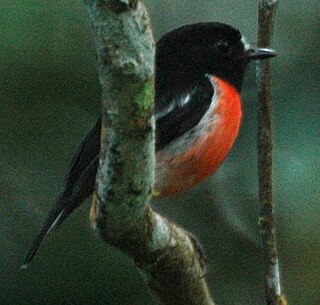 W
WThe Pacific robin, is a red-breasted Australasian robin in the passerine bird genus Petroica found in Melanesia and Polynesia. It is similar in plumage to the scarlet robin of Australia, and until recently the two were considered conspecific until split in 1999 by Schodde and Mason. Thirteen subspecies of Pacific robin are currently recognised, and these subspecies display considerable variation in plumage, foraging preferences, and habitat. The Norfolk robin was previously considered a subspecies of the Pacific robin, but is now considered a distinct species.
 W
WBuller's shearwater is a Pacific species of seabird in the family Procellariidae; it is also known as the grey-backed shearwater or New Zealand shearwater. A member of the black-billed wedge-tailed Thyellodroma group, among the larger shearwaters of the genus Ardenna, it forms a superspecies with the wedge-tailed shearwater.
 W
WThe Christmas shearwater is a medium-sized shearwater of the tropical Central Pacific. It is a poorly known species due to its remote nesting habits, and it has not been extensively studied at sea either.
 W
WThe streaked shearwater is a species of seabird. The adult bird averages 48 cm (19 in) in length, with a 122 cm (48 in) wingspan.
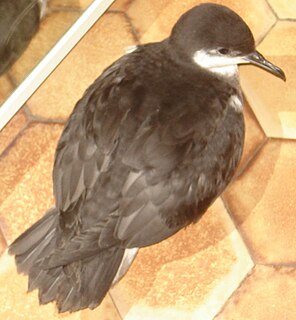 W
WThe tropical shearwater is a seabird in the family Procellariidae formerly considered conspecific with Audubon's shearwater.
 W
WThe wedge-tailed shearwater is a medium-large shearwater in the seabird family Procellariidae. It is one of the shearwater species that is sometimes referred to as a muttonbird, like the sooty shearwater of New Zealand and the short-tailed shearwater of Australia. It ranges throughout the tropical Pacific and Indian Oceans, roughly between latitudes 35°N and 35°S. It breeds on islands off Japan, on the Islas Revillagigedo, the Hawaiian Islands, the Seychelles, the Northern Mariana Islands, and off Eastern and Western Australia.
 W
WThe flesh-footed shearwater is a medium-sized shearwater. Its plumage is black. It has pale pinkish feet, and a pale bill with a distinct black tip. Together with the equally light-billed pink-footed shearwater, it forms the Hemipuffinus group, a superspecies which may or may not have an Atlantic relative in the great shearwater. These large shearwaters are among those that have been separated into the genus Ardenna. Recent genetic analysis indicates evidence of strong divergence between Pacific colonies relative to those in South and Western Australia, thought to be explained by philopatry and differences in foraging strategies during the breeding season.
 W
WThe Pacific swallow is a small passerine bird in the swallow family. It breeds in tropical southern Asia and the islands of the south Pacific. It is resident apart from some local seasonal movements. This bird is associated with coasts, but is increasingly spreading to forested uplands. The hill swallow was formerly considered conspecific.
 W
WThe sooty tern is a seabird in the family Laridae. It is a bird of the tropical oceans which sleeps on the wing, returning to land only for breeding- on islands throughout the equatorial zone.
 W
WThe white tern is a small seabird found across the tropical oceans of the world. It is sometimes known as the fairy tern although this name is potentially confusing as it is also the common name of Sternula nereis. Other names for the species include angel tern and white noddy in English, and manu-o-Kū in Hawaiian.
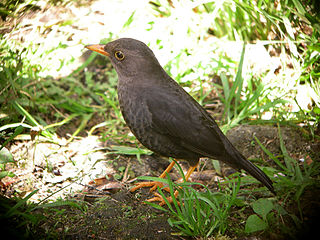 W
WThe island thrush is a common forest bird in the thrush family. Almost 50 subspecies have been described, ranging from Taiwan, through South East Asia and Melanesia, to Samoa, exhibiting great differences in plumage. Several subspecies are threatened and three have already become extinct.
 W
WThe red-tailed tropicbird is a seabird native to tropical parts of the Indian and Pacific Oceans. One of three closely related species of tropicbird (Phaethontidae), it was described by Pieter Boddaert in 1783. Superficially resembling a tern in appearance, it has almost all-white plumage with a black mask and a red bill. The sexes have similar plumage. As referenced in the common name, adults have red tail streamers that are about twice their body length. Four subspecies are recognised, but there is evidence of clinal variation in body size—with smaller birds in the north and larger in the south—and hence no grounds for subspecies.
 W
WThe white-tailed tropicbird (Phaethon lepturus) is a species of tropicbird. It is the smallest of three closely related seabirds of the tropical oceans and smallest member of the order Phaethontiformes. It is found in the tropical Atlantic, western Pacific and Indian Oceans. It also breeds on some Caribbean islands, and a few pairs have started nesting recently on Little Tobago, joining the red-billed tropicbird colony. In addition to the tropical Atlantic, it nests as far north as Bermuda, where it is locally called a "longtail".